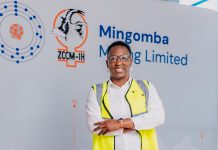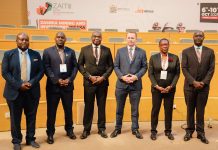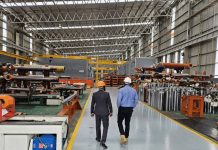Sleeping in tents; fending off snakes; having a container for an office; and holding board meetings under a tree! Life wasn’t easy in NW province before the mines were built. Barrick Lumwana’s Sustainability Manager remembers.
(Psst! Want to learn more about the transformation of the North-Western Province? Download our latest booklet “The 10-year miracle” here)
You joined Barrick Lumwana in 2007?
Yes. That was about two years before Lumwana Mine opened. The mine was still owned and operated by Equinox Minerals, from Australia.
Describe your impressions when you first arrived.
There was a good number of us, all from the Copperbelt, in the company bus. We had already passed Solwezi. There was no tarred road to the mine from the main road – just gravel. We kept asking the driver: where are we going?! All around us was bush. A big forest. We reached the mine construction camp, and it was all tents. You mean we’ll be sleeping in tents? [Laughter.] You mean there are no proper housing facilities?!
So there was no infrastructure?
Nothing. The mine and estate were still being built. There was no housing stock in the local area. We lived in those tents for almost two years. Almost every day, we would encounter snakes! In fact, it is said there were more snakes than people. There were no offices. So, we sat in a container, which we shared with the then Managing Director. The boardroom was under a tree!
How did Solwezi change?
Back then, Solwezi was a typical rural city. On the main road, it would be an hour before you saw a vehicle passing – and it would be a government vehicle. Now, ten years later, the roads in Solwezi are clogged, and you can’t even move freely.
We slept in tents and encountered snakes almost every day
Describe the work you were doing when the mine opened in 2009?
Equinox Minerals’ vision was to spur industry investment in the local area and try to move people away from just depending on the mine. As Business Development Officer, my role was to find those investors. We even got a license from the government to establish a Multi-Facility Economic Zone in Lumwana. It didn’t quite work out, but the vision is still there.
Why didn’t it work out? The Multi-Facility Economic Zone concept seems to be working well in Kalumbila.
Actually, Kalumbila learned a lot from us. Their teams came here to Lumwana to learn about how we set up this mine. One of the challenges we faced at Lumwana was that we did not separate the township investment from the mining operations. At Kalumbila, the mine area and the investment area are separate, and that makes investment much easier, especially as regards land title. Another challenge here at Lumwana is that we’re a smaller mine. The local population is therefore smaller, and so their overall purchasing power is lower. That affects the decision to invest.
Apparently, the mine brought power to the local community?
Yes. In the beginning, there were about 10 000 people in the local area. And there was no power. Now we have close to 45 000 people in the same area, and the local community gets its power from the mine. That has been good for commerce. A lot of small businesses and industries were able to start up in the area because of the availability of power.
What about employment?
After Barrick acquired Lumwana Mine from Equinox in 2011, there were very firm policies around preferential employment of people in the community and building capacity. Empowering locals to grow within the organisation. For example, one local person who started out as an operator years ago is today a mining superintendent. Back then, most of those jobs were done by expatriates. Now we have high local employment in the workforce.

How has mining changed people’s outlook on life?
Mining has empowered women as a gender. Today, women wear trousers, undertake business and go into banks and transact. More generally, mining has broadened people’s horizons beyond Lumwana. I remember we once took a group of locals to attend the agricultural show in Lusaka, to increase their exposure. It was the first time they had gone further than Solwezi.
What are some of the challenges you face in your work with the community?
Perceptions. People feel they are not destined for achievement or success. You ask why, and they say: that’s how it is; we are poor. This is common in rural settings in Zambia. We however try to get them to think differently. Low literacy levels are another challenge, even for those who’ve gone to school, because of the quality of education. Another challenge is managing expectations: many people thought this area would immediately become another Kitwe or Chingola. But there’s only so much we can do as a mine; the rest has to come from somewhere else.
How does government view your role in the community?
Over the years Lumwana Community Trust with support from Lumwana Mining Company has put up over 130 pieces of infrastructure. Our CSR approach is grassroots. Our investments go to actual people in the area and complements Government efforts. They feel the impact of what we are doing.
See also: Mining for Zambia meets Olivia Malambo























